INMA Study Tour on Artificial Intelligence
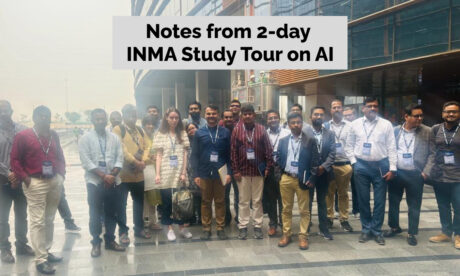
The International News Media Association hosted the 2023 INMA Study Tour on Artificial Intelligence, where 25 news leaders from 10 newsrooms attended. Madhavi Sekhri, INMA’s South Asia Division Head, generously invited me to moderate the two days. Here’s my roundup from the two days.
Meet the Cohort
The meeting was well-attended with 27 participants from 11 different newsrooms. We had representation from Product, Technology, Editorial, and Business departments.
- From Jagran New Media, we welcomed Gaurav Arora, the COO, along with Subhashish Dutta, who serves as Associate Editor.
- The team from Deccan Herald included their CEO, Shankar Sitaraman, and Pulkit Gupta, the Editorial Head.
- Hindustan Times sent a robust delegation led by Aviral Mathur, the Chief Data Scientist, followed by Abhishek Sharma, the CPO; Amit Verma, the CTO; and Varun Bagga, the Head of CDP.
- ABP News also had a significant presence with Subhamoy C. holding the position of CTO, Anindya B. as AVP, Arindam B. as CPO, and additional team members including Bishwajit K, and Debmalya D.
- From Eenadu, we had Brihathi Kiron Cherukuri, the Director, and Khayum Basha, the Chief AdOps.
- Amar Ujala was represented by Vibhas Sane, the Associate Editor, and Vikas Shekhawat, the AGM Product.
- The team from Malayala Manorama included Santhosh Jacob, the Content Coordinator; Venkatesan Mohanam, an Architect; and Tom Antony, an Engineer.
- Representing Sakshi Media Group were Anurag Agrawal, the CEO, and Kancharla Yadagiri Reddy, the Deputy Editor.
- Anastasia Geydarova was the sole representative from Sputnik News.
- From The Hindu, we had Manoj Kumar Venkatara, who works in Growth Product, and Nazir Ahamed, a Senior Product member.
- Lastly, from The Times of India, we had Chandrima Banerjee, our assistant editor news, and me.
Each attendee brought a unique perspective from their respective positions, contributing to a diverse and enriching exchange of ideas.
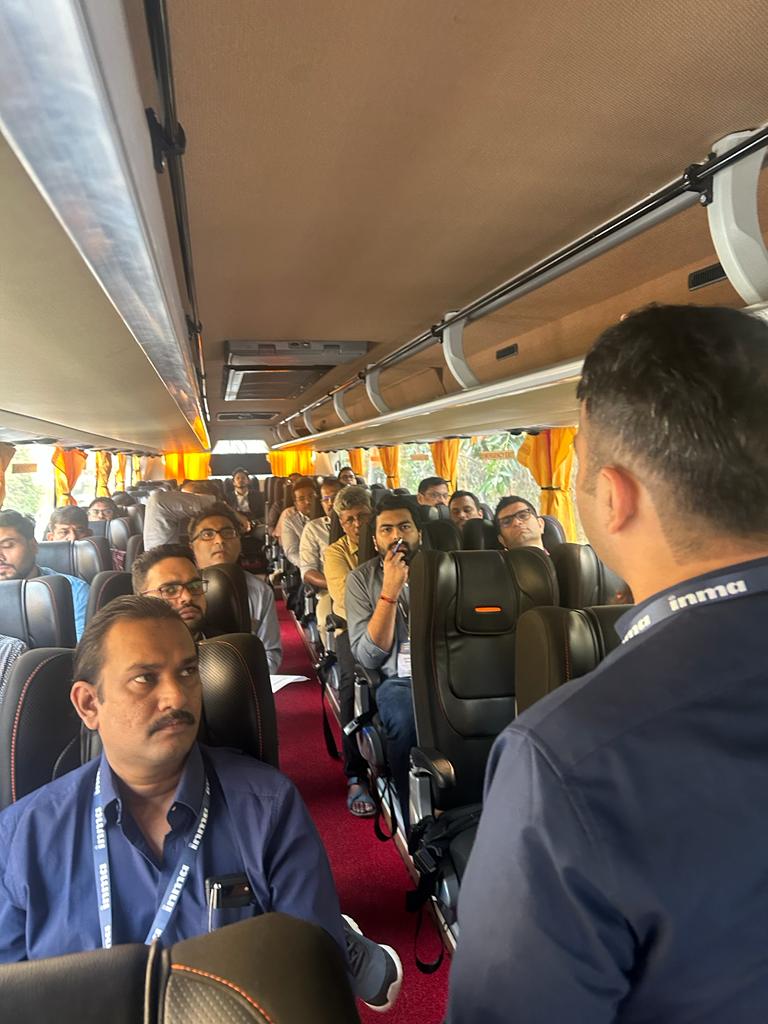
How are the two days organized?
On day 1, we will visit Big Tech companies that provide cloud infrastructures. Use these if you want to invest in strategic bets. Utilizing them will require you to spend a CAPEX (leveraging these meaningfully is a CAPEX at news media scale).
On day 2, we will have 10 small technology companies that will provide off-the-shelf tools requiring minimal integration. Use these as an OPEX for table stakes and efficiency bets until they are ROI-positive.
Day 1
We visited three BigTech companies—Microsoft, Google, and Amazon.
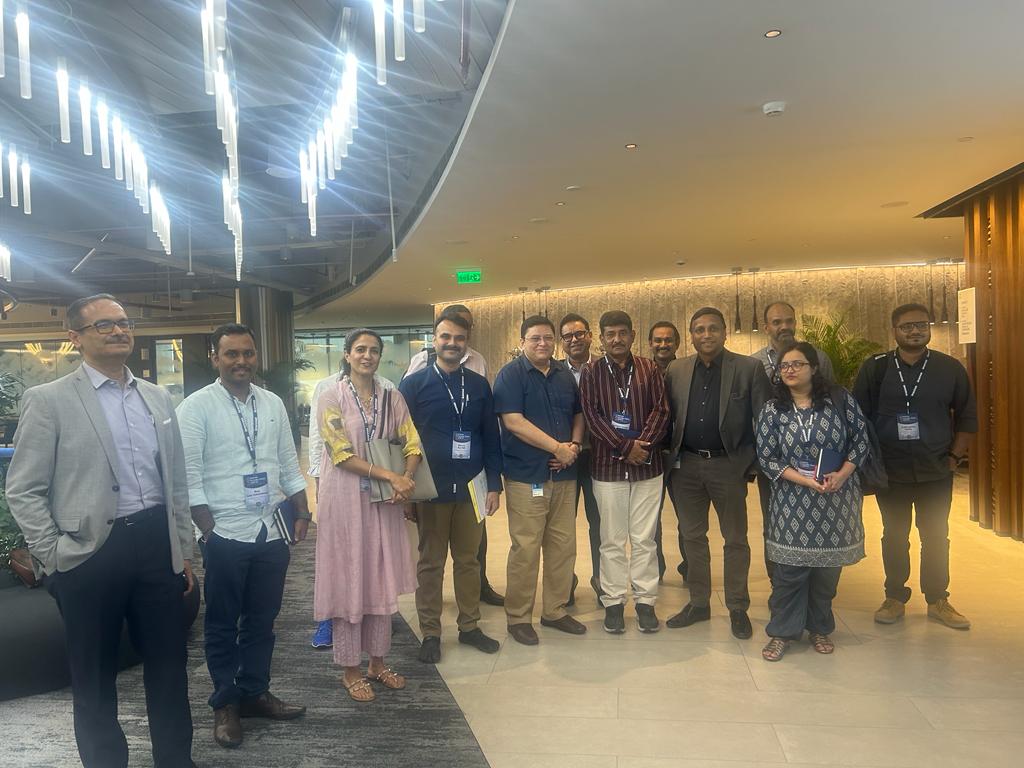
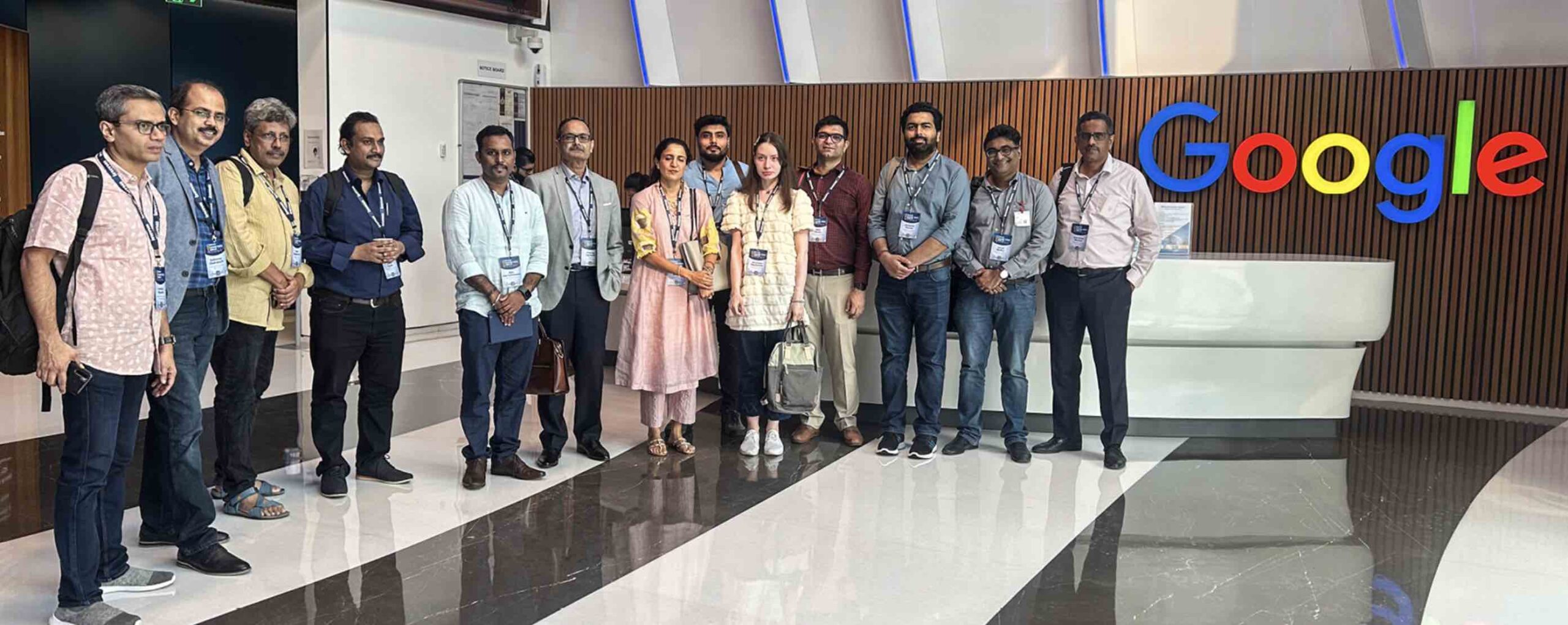

Microsoft: For a long time, Google has dominated the search, programmatic advertising, and browser market (Chrome). Since the launch of OpenAI’s Large Language Models and Microsoft’s strategic investment in the company, Microsoft’s search engine (Bing) and browser (Edge) have been growing its share in these markets. Additionally, Microsoft acquired Xandr, a digital advertising marketplace similar to Google Ads. With this, is Microsoft increasingly becoming a viable alternative?
Are you looking to build custom AI solutions in-house? In this situation, it is likely, you’ll end up building on the Google Cloud or Amazon Web Services.
Google Cloud. All digital publishers use Google Analytics and most end up using BigQuery for analyzing their Google Analytics data. Beyond this, Google Cloud helps publishers in creating personalized, India-first news content, offering advertisers new revenue streams through data-driven insights and cross-promotion with retail.
Amazon Web Services. With cost savings and quick scaling, AWS helps publishers build competitive edge by offering solutions in the following three fields:
- Monetization: Publishers can automate ad performance, manage digital identities, and use predictive analytics for revenue growth.
- Content Management: A centralized cloud infrastructure streamlines workflows and content distribution.
- Personalized Experiences: AI/ML innovations offer deep audience insights and optimize engagement.
I will write more about the material covered on Day 1 in the next 7 days.
Day 1 ended with a dinner get-together at the Delhi Gymkhana.
Day 2
On Day 2, we met 10 vendors at IIC.
4.1 Editorial
Using AI to Speed Up Video Creation
Next, we had Manoj Prabhakaran from Chennai-based TrueInfo Labs provide consulting services to implement newsroom efficiency solutions on top of large language models. They offer a varied array of solutions. This will help newsrooms pick and choose what is right for them and get it implemented.
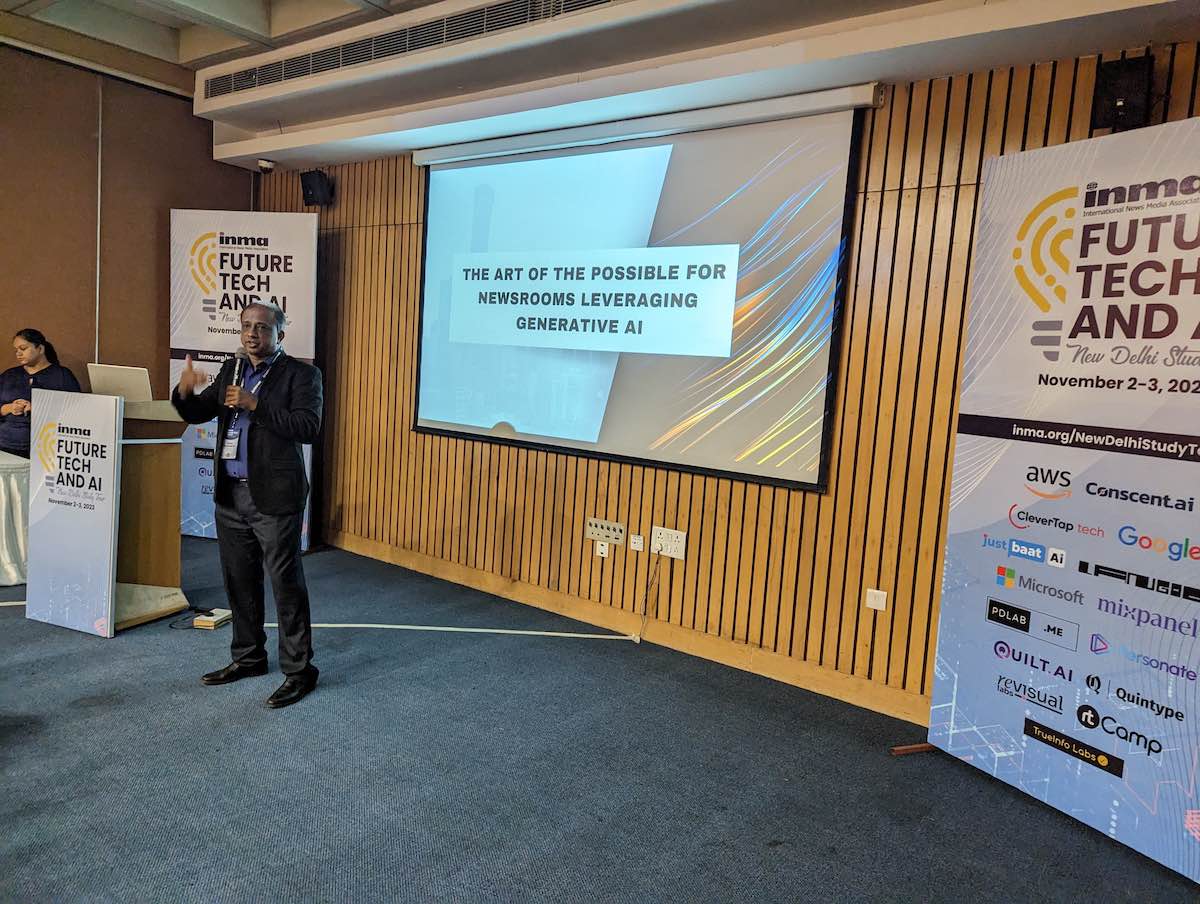
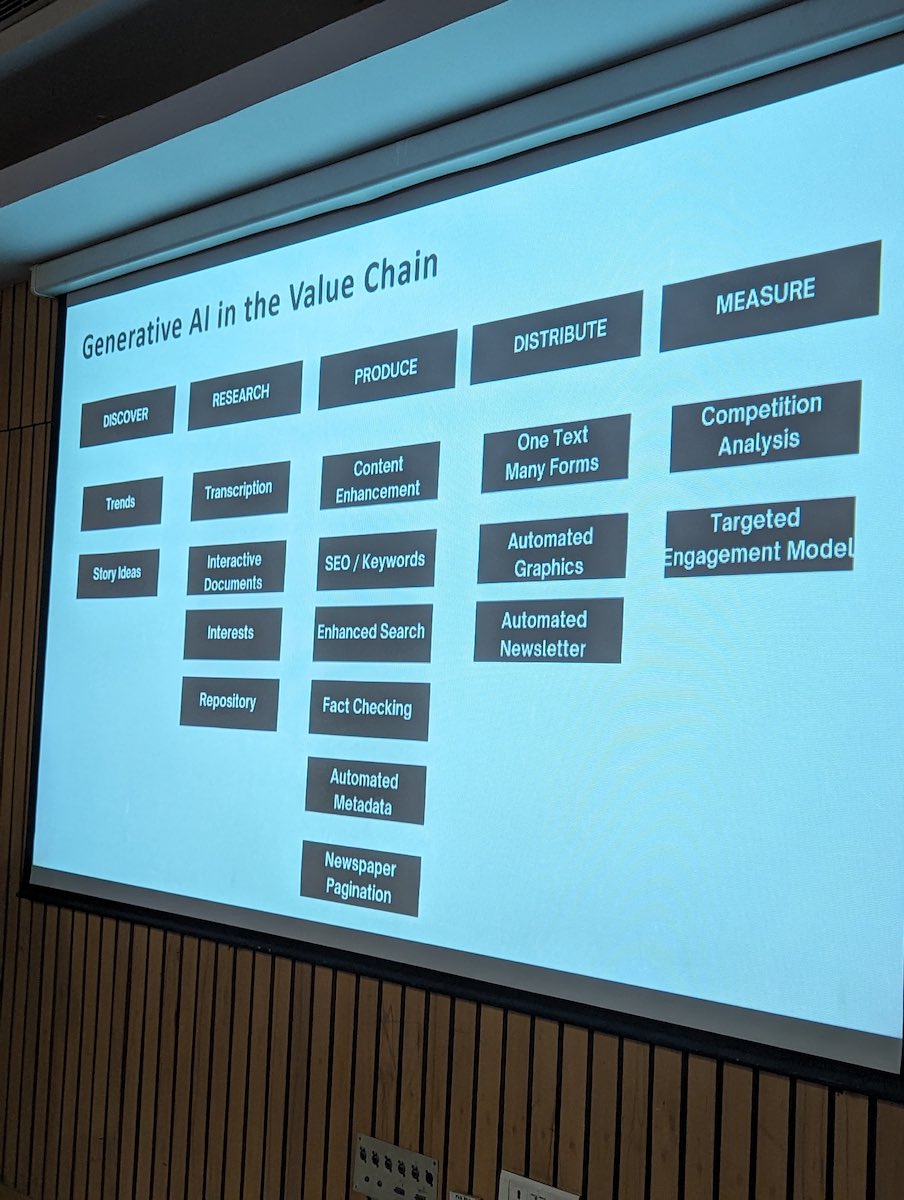
Build Differentiation with Immersives
Finally, we had Anshul Pandey from Kalakari.ai. Anshul is one of the brightest NLP-based data scientists I’ve known for almost a decade now. He founded and continues to run the New York-based Accern. He is now in India and is setting up a number of different AI-based firms. Kalakari is using LLMs to speed up content creation.
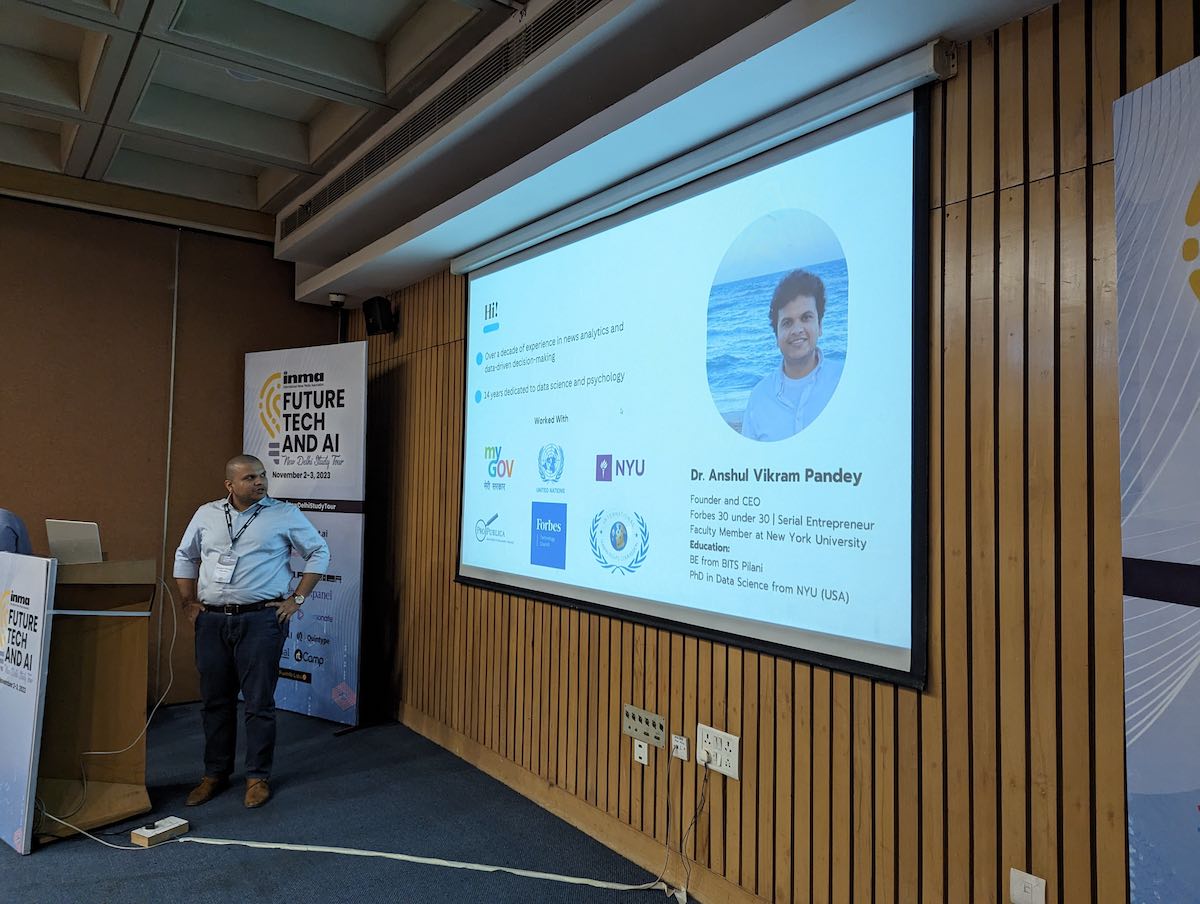
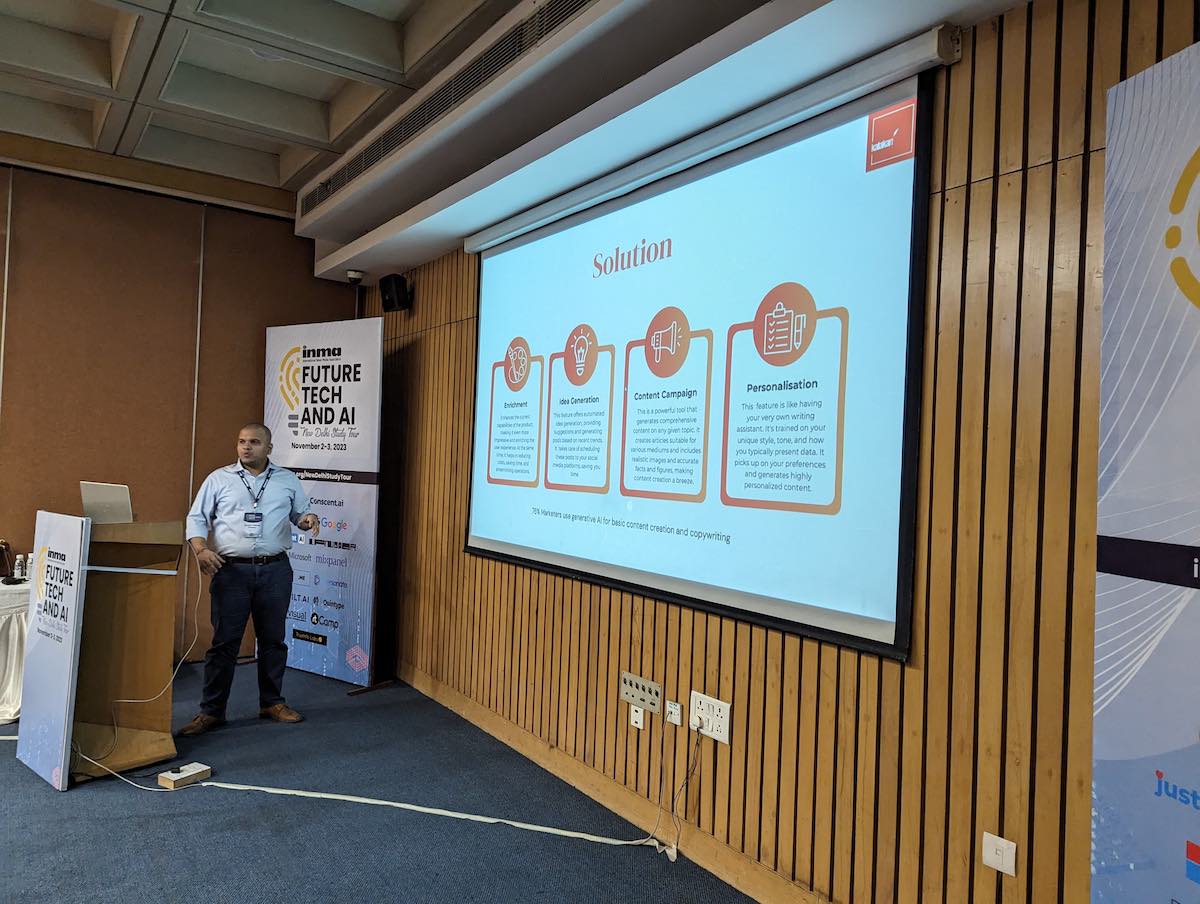
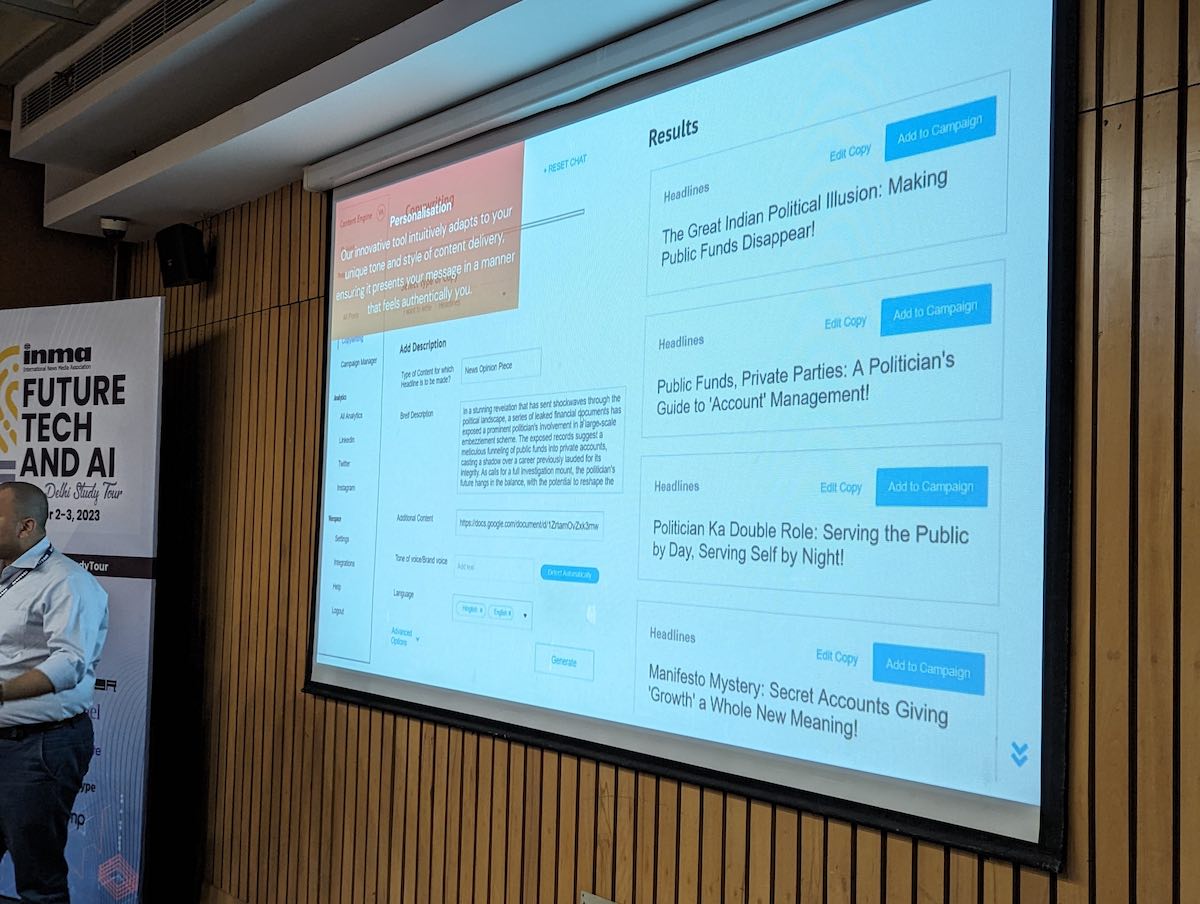
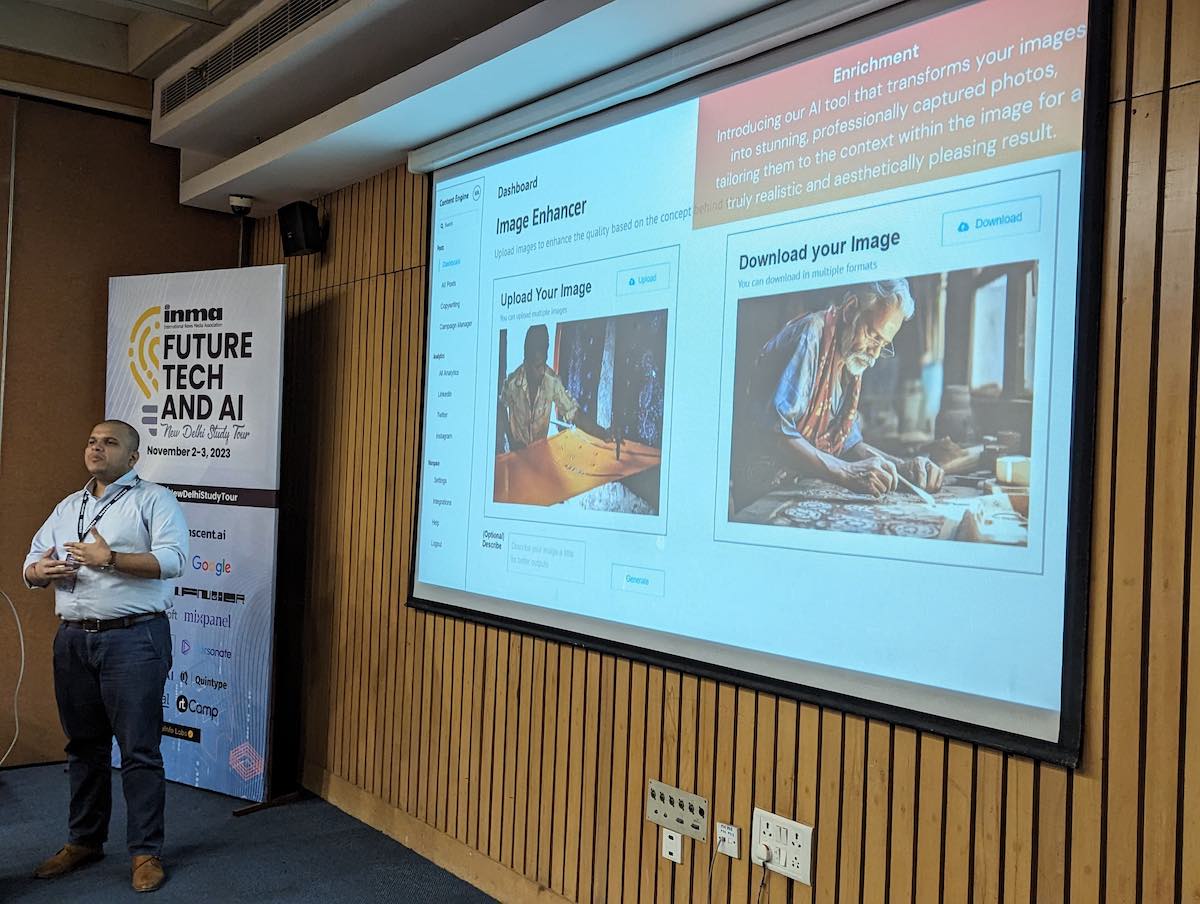
4.2 Product
In today’s world, digital news companies cannot survive without products like Mixpanel, Clevertap, and Web Engage. These tools are critical to record clickstream events at scale, warehouse them, analyze them, and when required, segment them to send out targeted communication via SMS, Email, In-Apps, and Push Notifications.
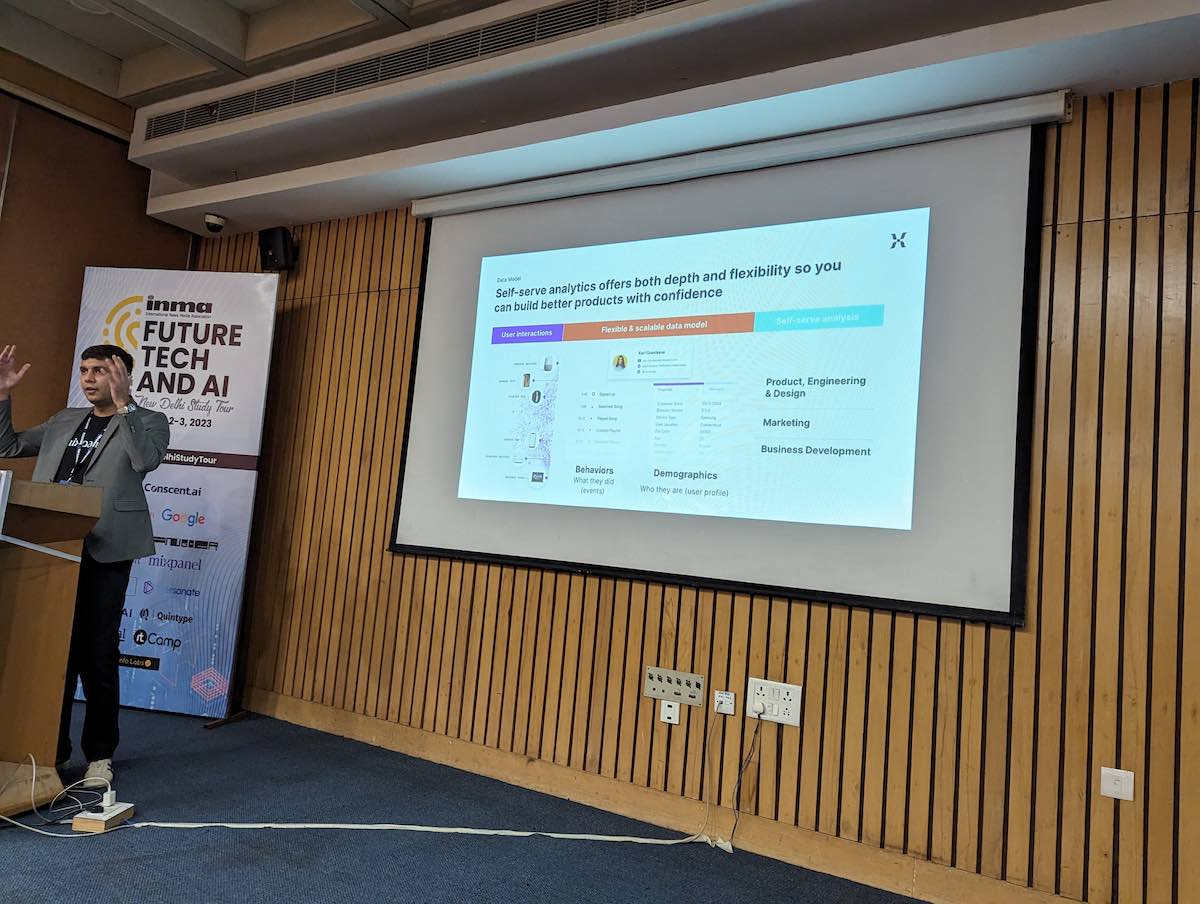
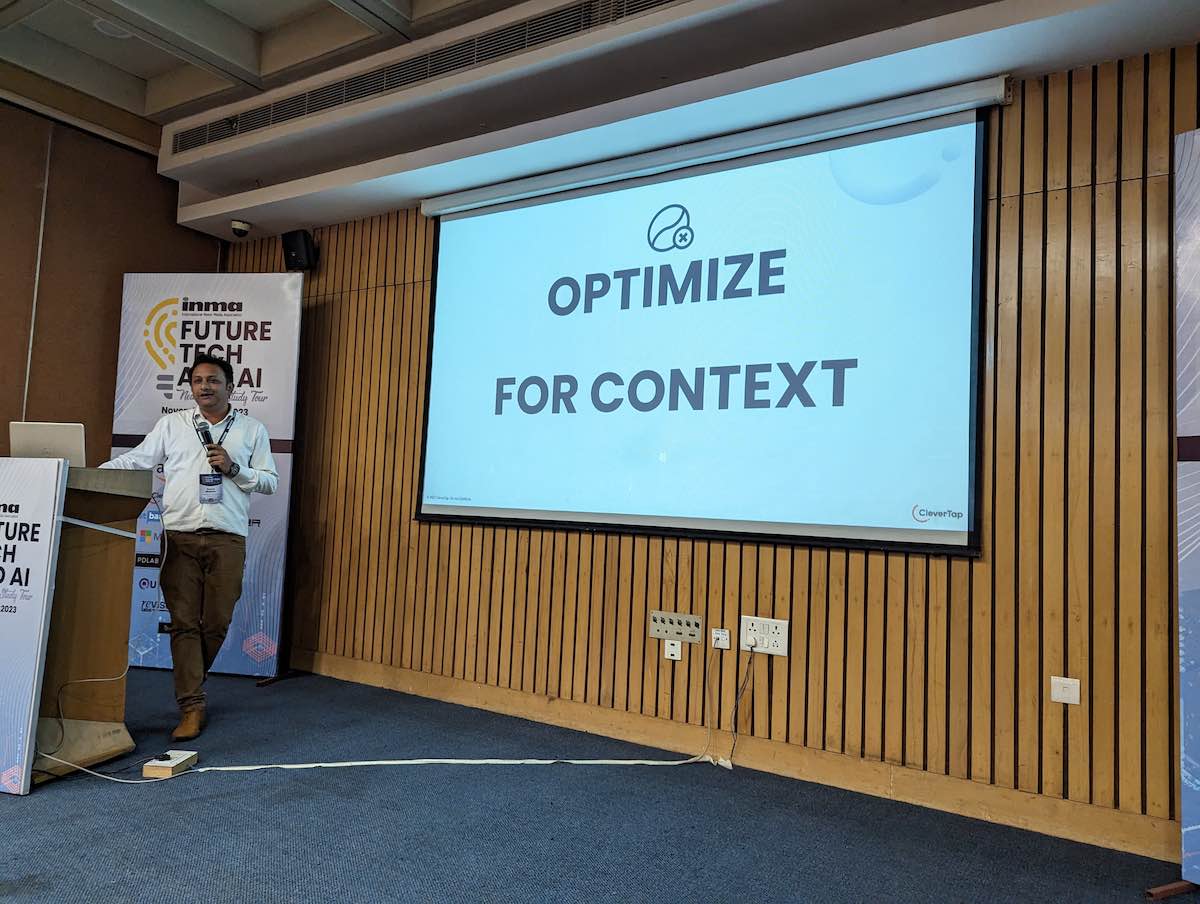
There were two other vendors — the Langoor team presenting Quilt.ai and Conscent.ai. By this time, I was extremely exhausted and took a break. I will add their details in the coming week. If you were there at the study tour and want to help me write this part out, please DM. 🙂
4.3 Business
We saved the most insightful session for last. Here are insights from Sandeep Amar, the ex-CEO of Indian Express and now the founder of PDlab.me.
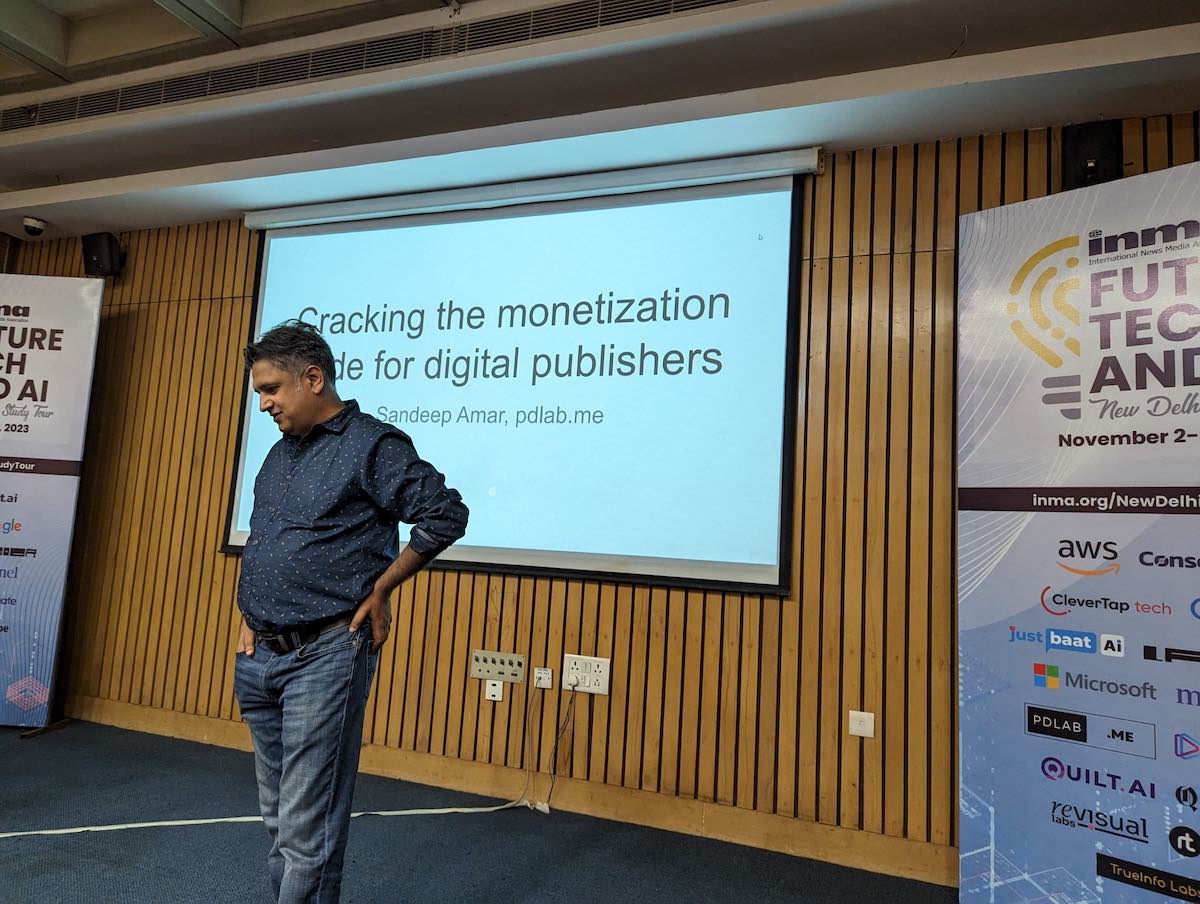
4.3.1 Monetization with Advertisement
What Percentage Of Indirect Revenue Comes To You
Automating Floor Prices To Grow Indirect Revenue
4.3.2 Distribution to Invest In
Micro-Celebrities Are Monetizing Their Social Presence
4.3.3 Content Strategy that Aids with Advertisement
I will wrap up now. These two days were extremely rewarding, especially the conversations with other cohort members.
